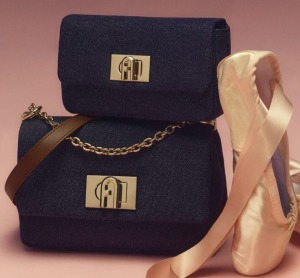By Adrisylva
Fashion styles have evolved with cultural, social, and technological shifts. This blog explores unique fashion trends from different eras.
"The countdown to the 90s has begun."
MEN&WOMEN

The 1920s, also known as the Roaring Twenties, was a decade marked by a departure from the conservative fashion styles of the previous decades. Women’s fashion, in particular, saw a significant transformation with the rise of the “flapper” look, characterised by short bobbed hair, dropped waistlines, and loose-fitting dresses adorned with sequins, fringe, and beads. This era embraced a more liberated and carefree attitude, which was partly influenced by the end of World War I and a desire for social change.
Compared to previous decades, the 1920s silhouette for men was more relaxed and loose. Suits were typically single-breasted, with a straight-cut jacket and high-waisted trousers.
Fabrics such as tweed, wool, and linen were commonly used for suits. Lightweight materials became more popular as the decade progressed, reflecting the desire for comfort and mobility. Accessories were crucial in men’s fashion during the 1920s. Wide-brimmed fedora hats, suspenders, pocket squares, and collar pins were popular accessories. Neckties were often wide and made of silk.
Suits were typically in darker, more subdued colours like navy, grey, and brown. However, patterns such as pinstripes and checks were also popular, adding flair to men’s attire. The 1920s saw the emergence of casual wear for men, particularly for leisure activities like golf and tennis. Knitted sweaters, cardigans, and sporty jackets became fashionable for casual occasions.
During the 1930s Great Depression, the economic downturn also affected the fashion industry. As a result, the hemlines of women’s dresses dropped, and the silhouettes became more streamlined and form-fitting. These changes reflected a sense of practicality and austerity. Women’s dresses were often made with bias cuts, emphasising a slim and elongated figure. Materials used were more affordable and durable, with an emphasis on functionality. Despite the challenges of the time, women expressed themselves through fashion by embracing luxurious fabrics, glamorous accessories, and timeless silhouettes. Women’s fashion in the 1930s was characterised by elegance, sophistication, and a sense of escapism from the economic hardships of the Great Depression.
The silhouette of men’s clothing in the 1930s became more streamlined and fitted compared to the previous decade. Suits had a narrower cut with a closer fit to the body. Jackets featured padded shoulders and high-waisted trousers with a tapered leg.
Like the 1920s, wool, tweed, and linen remained popular suit fabric choices. However, lighter-weight fabrics such as gabardine gained popularity, offering a sleeker look. Accessories continued to be important in men’s fashion during the 1930s. Fedora hats remained a staple, while tie pins, cufflinks, and elegant leather shoes were essential for completing a polished look. The colour palette for men’s suits in the 1930s remained relatively conservative, with shades of grey, brown, and blue dominating. However, there was a resurgence of interest in bold patterns like plaids and stripes, particularly for casual wear. Evening wear for men in the 1930s was characterised by the classic black-tie ensemble, consisting of a tuxedo jacket, matching trousers, a white dress shirt, a black bow tie, and patent leather shoes.


Like men’s fashion, women’s clothing in the 1940s also reflected the practicalities of wartime. Fabric rationing led to the creation of utility clothing, which featured simplified designs with fewer embellishments. Skirts and dresses were often shorter in length to conserve fabric. Daytime attire for women typically consisted of A-line dresses with modest necklines and sleeves. Suits with tailored jackets and knee-length skirts became popular workwear options, reflecting the increasing number of women entering the workforce during the war. Despite the constraints of wartime rationing, women still embraced elegance and glamour for evening events. Evening gowns featured sleek silhouettes with draped fabric and embellishments like sequins or beading. Shoulder pads were commonly used to create a structured look. With fabric shortages, women became skilled at making do with what they had. They often altered or repurposed existing garments to create new looks. Make-do-and-mend campaigns encouraged creativity and resourcefulness in clothing production. Accessories played a crucial role in enhancing women’s outfits during the 1940s. Hats, gloves, and handbags were essential accessories that added a finishing touch to ensembles. Scarves were also popular accessories, often worn around the neck or tied in the hair.
The military played a significant role in shaping men’s fashion during the 1940s. Military uniforms inspired civilian clothing, leading to the popularity of double-breasted suits with broad shoulders, wide lapels, and straight-legged trousers.
Due to fabric rationing and the need for practicality during wartime, men’s clothing became more utilitarian. Suits were often made with fewer pockets and minimal embellishments. Some materials, such as wool, were diverted to military use, leading to alternative fabrics like rayon and synthetic blends. Casual attire for men in the 1940s often consisted of button-up shirts paired with trousers or khakis. Jumpers, cardigans, and pullovers were popular, providing warmth and comfort during colder months. Accessories were relatively subdued compared to previous decades. Neckties were narrower and made from materials like wool or rayon. Fedoras remained a staple accessory for men, providing both style and practicality. The colour palette for men’s clothing in the 1940s was generally muted, with earth tones like brown, olive, and grey being popular choices. Striped patterns and simple geometric designs were common, adding visual interest to otherwise understated garments. (P&P)

In the 1950s, traditional gender roles were celebrated, and men and women exuded elegance and sophistication. The decade's styles reflected the optimism and prosperity of the post-war era while embracing youthful rebellion and individual expression.
Women’s fashion in the 1950s celebrated femininity, emphasising an hourglass figure. Dresses featured fitted bodices, nipped-in waists, and full skirts, often achieved with the help of petticoats or crinolines. The “New Look” silhouette, popularised by Christian Dior, epitomised this style. Daytime attire for women typically consisted of dresses or skirts paired with blouses. Shirtwaist dresses, often with full skirts and cinched waists, were popular for casual and everyday wear. Tailored suits with pencil skirts were also fashionable for workwear. Evening gowns in the 1950s were glamorous and sophisticated, featuring luxurious fabrics like silk, satin, and taffeta. Strapless, sweetheart neckline dresses and ball gowns with full skirts were popular choices for formal events. Gloves, pearls, and elaborate hairstyles completed the elegant evening look. Accessories played a crucial role in women’s fashion during the 1950s. Wide-brimmed hats, cat-eye sunglasses, and decorative hair accessories like headbands and hair scarves were popular. Handbags, gloves, and jewellery, including pearls and rhinestones, were essential accessories that added a finishing touch to outfits. Women often wore pedal pushers, capri pants, or circle skirts paired with fitted sweaters or blouses for casual outings. The “sweater girl” look, popularised by Hollywood starlets like Marilyn Monroe, emphasised figure-hugging jumpers worn with pencil skirts or fitted trousers.

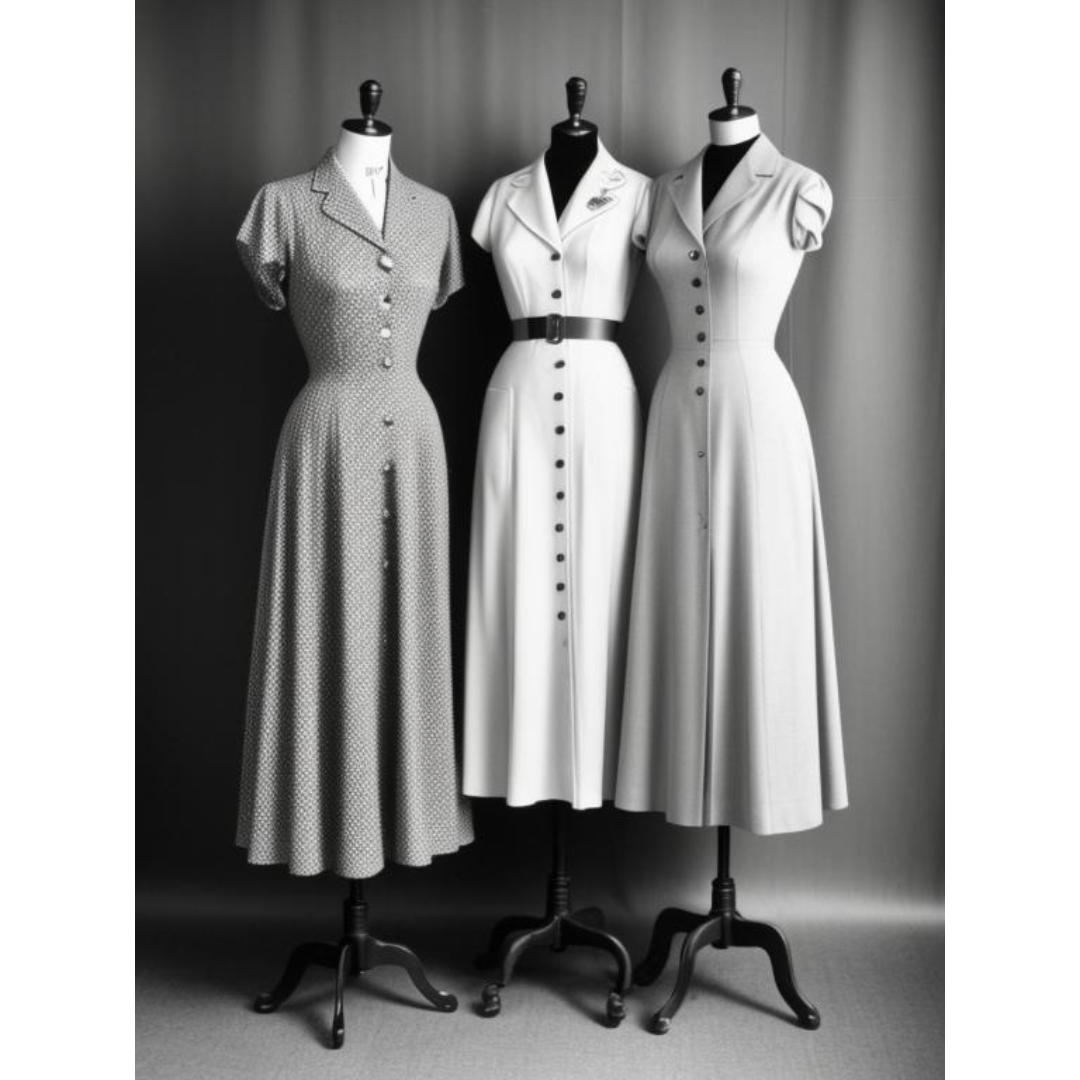
The 1950s saw a return to traditional tailored suits for men, focusing on sharp lines and clean silhouettes. Suits were typically single-breasted with narrow lapels and tapered trousers. The “sack suit” style, characterised by a straight-cut jacket with minimal shaping, also gained popularity. Casual attire for men in the 1950s often included button-up shirts paired with slacks or khakis. Sweaters, cardigans, and polo shirts were popular choices for layering. Jackets like the Harrington or varsity jacket were fashionable for outdoor activities. Accessories played a crucial role in men’s fashion during the 1950s. Fedora hats remained popular, while narrow ties made of silk or wool were worn with suits. Pocket squares, cufflinks, and tie bars were standard accessories that added a touch of sophistication to outfits. Denim became increasingly popular as casual wear for men in the 1950s, thanks in part to the influence of Hollywood stars like James Dean and Marlon Brando. Jeans were typically slim fitting with a high waist and straight legs, often paired with white T-shirts and leather jackets. For formal occasions, men wore tuxedos or suits in dark colours like black or midnight blue. The classic black-tie ensemble consisted of a tuxedo jacket, matching trousers, a white dress shirt, a black bow tie, and patent leather shoes.
The 1960s was a decade that witnessed a remarkable transformation in culture and society, which was also reflected in fashion. During this period, fashion styles moved away from the traditional and conservative styles of the previous decade towards a greater focus on youth culture, innovation, and self-expression.
In the early 1960s, men’s fashion continued the trend towards slimmer silhouettes that began in the late 1950s. Suits featured narrower lapels, shorter jacket lengths, and tapered trousers. The “mod” style, influenced by British fashion, became popular, characterised by bold patterns and bright colours. Casual attire for men in the 1960s embraced a more relaxed and informal look. Polo shirts, button-up shirts with bold prints, and turtleneck jumpers were popular. The “preppy” style, characterised by chinos, button-down shirts, and loafers, also gained popularity among younger men.
Denim remained a staple of men’s casual wear in the 1960s. Jeans became more form-fitting, with styles like slim-cut and bootcut gaining popularity. Denim jackets and shirts were also fashionable choices for layering. Accessories played a crucial role in men’s fashion during the 1960s. Skinny ties in bold colours and patterns were worn with suits and casual attire. Sunglasses, particularly styles like aviators and wayfarers, became iconic accessories.

Chelsea boots, loafers, and sneakers were popular footwear choices. The latter part of the 1960s saw the rise of the counterculture movement, which influenced men’s fashion by rejecting mainstream norms. Hippie styles, characterised by tie-dye shirts, bell-bottom jeans, and fringe jackets, became popular among young men seeking to express their individuality and anti-establishment ideals.
The 1960s is often remembered as the “mod” fashion era, characterised by bold colours, geometric patterns, and the iconic mini skirt. Designers like Mary Quant and André Courrèges popularised the mini skirt, symbolising youth culture and women’s liberation. Women’s fashion during this time also shifted towards more practical and tailored styles. Shift dresses with straight, A-line silhouettes and short hemlines became a staple, as did matching pantsuits consisting of jackets and trousers.
High-waisted trousers and capri pants were also in vogue. Accessories were essential in completing the modern look for women in the 1960s. Go-go boots, often in white or bright colours, were a must-have footwear option. Statement jewellery, such as oversized earrings and bold necklaces, added a touch of glamour. Headbands, scarves, and berets were popular accessories that completed the mod ensemble.

As the counterculture movement gained momentum in the late 1960s, hippie fashion became increasingly influential. Flowing maxi dresses, peasant blouses, embroidered denim, and fringe vests were the characteristic elements of hippie style, reflecting a desire for freedom, peace, and self-expression.
The 1970s were marked by a varied range of fashion trends that were influenced by cultural, social, and political movements. Fashion in the '70s was eclectic, with styles ranging from the continuation of 1960s-inspired looks to the emergence of new subcultures such as disco and punk.
The 1970s fashion trends were known for their diversity and eclecticism. There were various styles, ranging from disco glamour to punk rebellion or bohemian chic. It was a decade of self-expression and experimentation when fashion mirrored the cultural and social changes of the time.
The disco era of the 1970s brought a glamorous and extravagant aesthetic to women’s fashion. Sequins, glitter, and metallic fabrics created eye-catching disco outfits. Halter neck tops, wrap dresses, and jumpsuits with wide legs were popular choices for dancing the night away. Bohemian fashion continued influencing women’s fashion during the 1970s, focusing on natural fabrics, flowing silhouettes, and ethnic-inspired prints. Maxi dresses, peasant blouses, and embroidered denim were critical elements of the boho-chic look.
Like men’s fashion, the punk subculture impacted women’s fashion in the 1970s. Punk-inspired clothing featured torn garments, safety pins, and DIY embellishments. Leather jackets, ripped T-shirts, and fishnet stockings were famous for creating a rebellious punk look. Despite the influence of disco and punk styles, more feminine and romantic silhouettes remained popular in women’s fashion during the 1970s. Wrap dresses, midi skirts, and fitted blouses with wide collars were fashionable choices for everyday wear. Accessories were crucial in completing women’s outfits in the 1970s. Wide-brimmed floppy hats, oversized sunglasses, and statement jewellery, including hoop earrings and layered necklaces, were popular accessories that added flair to ensembles. Platform shoes and wedge sandals were fashionable footwear choices that complemented the relaxed and bohemian aesthetic of the decade.

70s Men's Fashion
The disco era of the 1970s brought bold and striking fashion choices for men. Disco fashion was characterised by flashy, form-fitting clothing, often made from fabrics like polyester and lurex that shimmered under the lights of the discotheque. Among popular choices are bell-bottom trousers, fitted shirts with wide collars and three-piece suits in bright colours and patterns. Casual men’s attire in the 1970s was relaxed and laid-back, featuring staple items such as denim jeans and jackets, corduroy trousers, plaid shirts, and knit jumper. Towards the latter half of the decade, the punk subculture emerged, bringing a rebellious and DIY approach to fashion. Ripped clothing, safety pins, leather jackets, and band T-shirts characterised punk fashion. Mohawk hairstyles, studded accessories, and combat boots completed the punk look.
During the 1970s, Safari-inspired clothing became popular. Earthy tones and practical details such as patch pockets and epaulettes characterised it. At the same time, Bohemian fashion, which was influenced by the hippie movement of the 1960s, continued to be relevant. Peasant blouses and fringe vests were fashionable choices. Accessories played a crucial role in men’s fashion in the 1970s. Wide-brimmed hats, aviator sunglasses, and scarves were popular accessories that added a touch of style to outfits. Platform shoes, often with exaggerated heels, were a notable footwear choice that gained popularity during this decade.
The 1980s was a decade marked by bold and extravagant fashion. It was characterised by excess, experimentation, and the influence of various cultural movements. Fashion during this period was diverse, with styles ranging from glamorous and wealthy to rebellious and avant-garde. The fashion of the 1980s was known for its diversity and eclecticism, with styles ranging from disco glamour to punk rebellion to bohemian chic. It was a decade of self-expression and experimentation, with fashion reflecting the cultural and social shifts of the time.
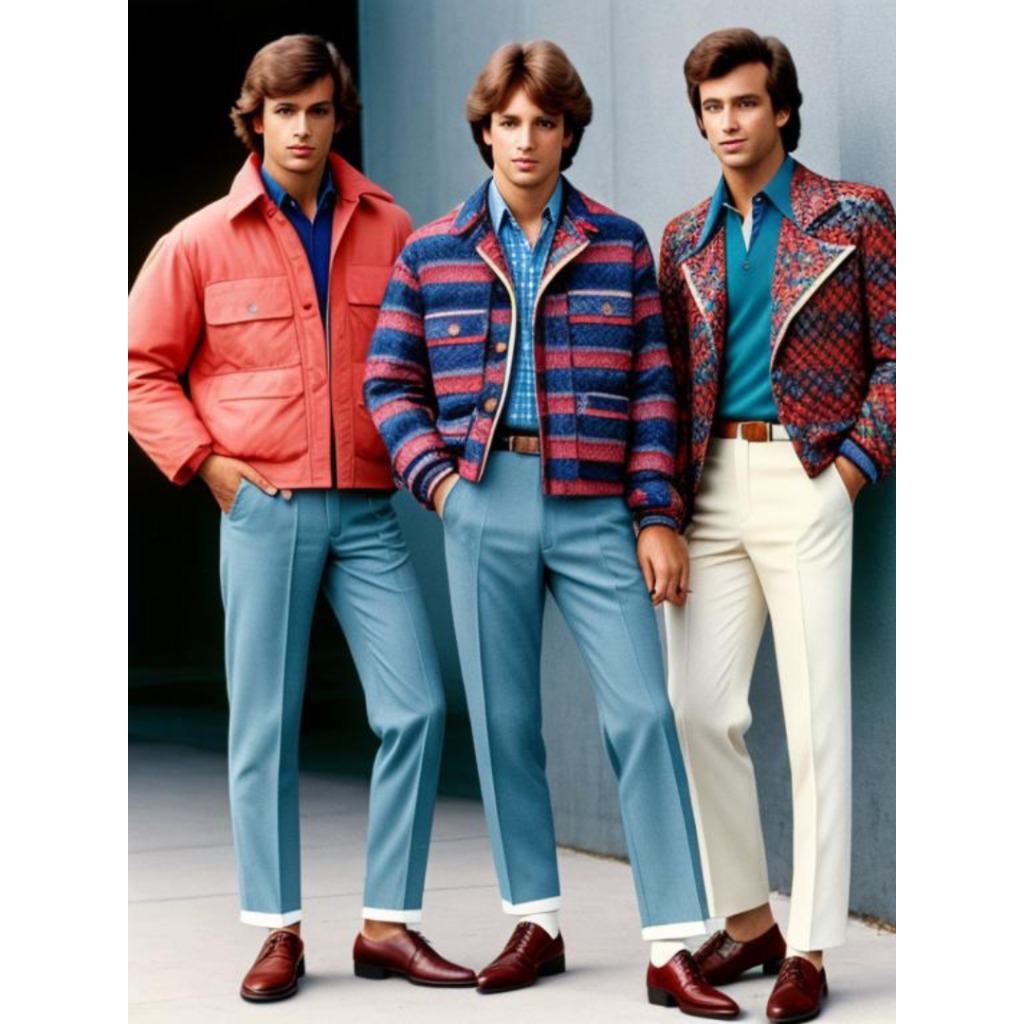
During the 1980s, fashion witnessed an era of diverse trends and styles. The power dressing trend was marked by tailored suits featuring exaggerated shoulders, giving the wearer a bold and confident look. Preppy fashion, conversely, was characterised by a more conservative style that included polo shirts, chinos, and cable-knit jumpers, giving the wearer a refined and polished look. Casual wear embraced the tracksuit, a popular choice for men and women, and denim, often paired with denim jackets or vests.
Music subcultures like New Wave and punk adopted their fashion styles during the 80s. New Wave fashion was characterised by bold colours and avant-garde shapes, while punk fashion featured ripped clothing, leather jackets, and band t-shirts. Statement accessories like belts, suspenders, and trainers were popular among subcultures.
Women’s fashion in the 80s saw the rise of bold silhouettes focused on broad shoulders and structured blazers. Athletic-inspired wear like leotards and tracksuits became increasingly popular, providing women comfort and style. The punk and New Wave styles saw the rise of ripped clothing and avant-garde shapes, while glam rock outfits commonly included sequins and animal prints. Statement jewellery, wide belts, and pointed-toe pumps completed the look, ensuring every detail was noticed.

The 1990s saw a departure from the excessive fashion trends of the 1980s towards a more relaxed, minimalist aesthetic, influenced by pop culture, music, and streetwear.
In the 1990s, men's fashion shifted towards comfort and practicality, making casual wear increasingly popular. T-shirts, jeans, and trainers became wardrobe staples, led by Gap and Levi's brands. Streetwear culture, influenced by urban youth and hip-hop music, rose during this time. Baggy jeans, oversized hoodies, and graphic T-shirts became emblematic of street style, with brands like FUBU, Cross Colours, and Karl Kani gaining popularity for their urban-inspired clothing. The grunge movement, originating from the Pacific Northwest music scene, also significantly impacted men's fashion in the 1990s. Grunge fashion was characterised by a messy, anti-fashion aesthetic, with flannel shirts, ripped jeans, and combat boots critical elements of the look. Sportswear remained a prominent trend during the decade, with athletic trainers and tracksuit bottoms, all famous for casual and activewear. Brands such as Nike, Adidas, and Reebok dominated the sportswear market. Later in the 1990s, minimalist fashion gained popularity, focusing on clean lines, neutral colours, and simple silhouettes. Tailored suits with narrow lapels and flat-front trousers became fashionable for more formal occasions.

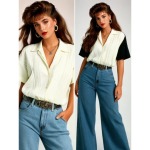
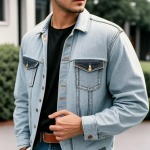
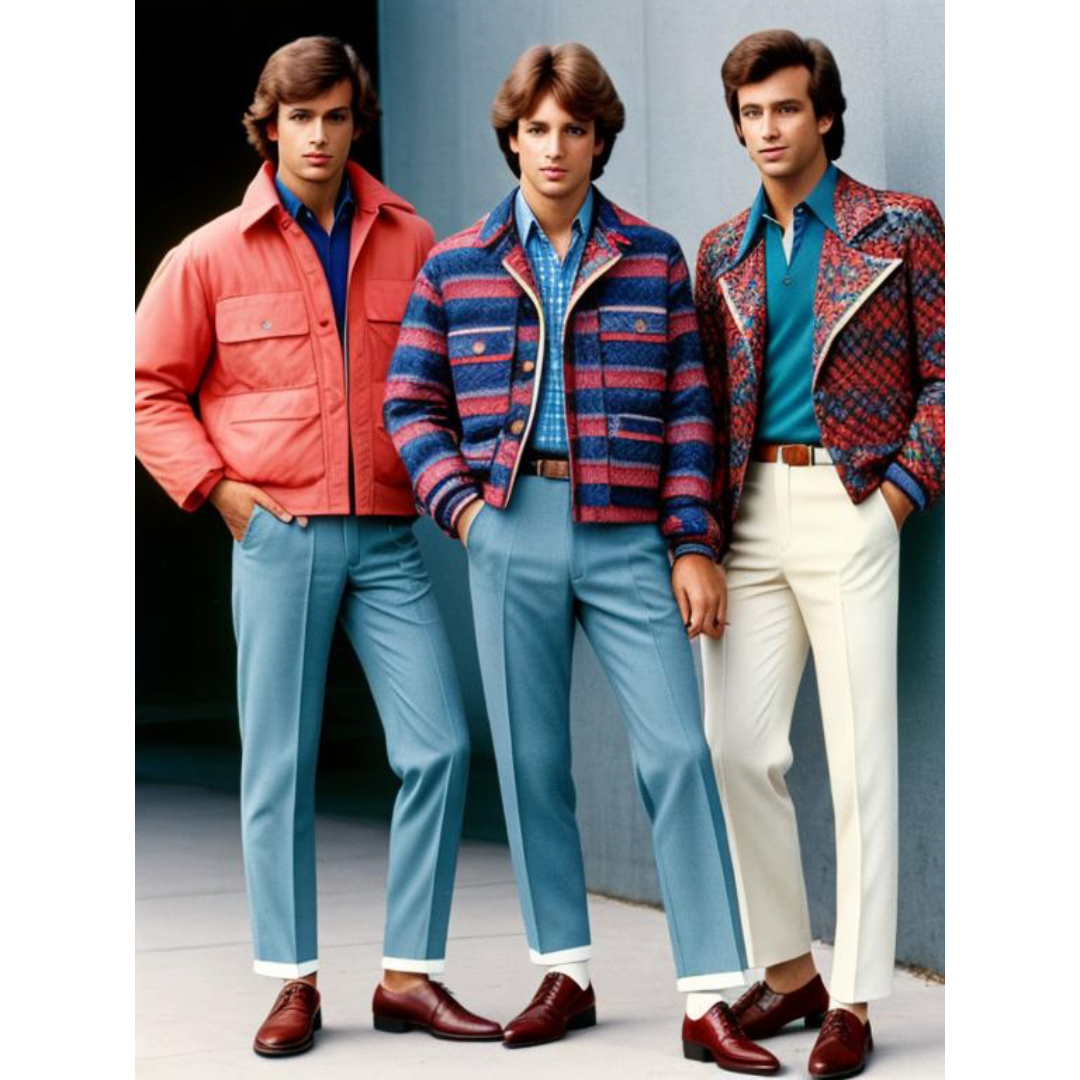
Women’s fashion in the 1990s also embraced a more relaxed and minimalist aesthetic. Basic T-shirts, mom jeans, and slip dresses became essential clothing for many women. The “heroin chic” look, popularised by models like Kate Moss, epitomised the minimalist style of the decade. Grunge fashion had a significant influence on women’s fashion in the 1990s, with its emphasis on comfort and authenticity. Oversized flannel shirts, distressed denim, and combat boots were crucial elements of the grunge-inspired look. Layering was also a prominent feature of grunge fashion, with T-shirts worn over long-sleeved tops and dresses over T-shirts.
Athleisure, a trend that blurred the lines between athletic and everyday clothing, emerged in the 1990s. Leggings, sports bras, and crop tops became fashionable for casual and activewear choices. Brands like Lululemon and Champion gained popularity for their stylish and functional athletic apparel. While the 1990s embraced minimalism and casual wear, there was also a nostalgic revival of 1970s and 1980s styles. High-waisted jeans, platform shoes, and retro prints returned, reflecting a desire for nostalgia and old-fashioned charm. Pop culture significantly influenced women’s fashion in the 1990s. Music icons, TV shows, and movies often influenced fashion trends. The “Rachel” haircut, popularised by Jennifer Aniston’s character on the TV show “Friends,” became an iconic hairstyle of the decade, adding a twist to a fashion any fashion styling of this decade.
Fashion styling has changed significantly over the decades, mirroring societal shifts, culture, technology, and consumer behaviour. While fashion trends may fade away, the fundamental principles of creativity, self-expression, and innovation remain constant and drive the ongoing transformation of fashion in the contemporary world.
Diversity and Eclecticism
Fashion is a constantly changing industry that has always been diverse. Each decade reflects the cultural, social, and economic influences of its time. From the structured silhouettes of the 1950s to the more relaxed styles of the 1990s, fashion trends have constantly evolved and adapted.
Influence of Subcultures
Subcultures have influenced fashion trends throughout history, providing alternative styles and aesthetics that challenge mainstream norms. From the punk movement of the 1970s to the grunge scene of the 1990s, subcultures have played a significant role in shaping fashion.
Innovation and Technology
Over the years, fashion styling has been influenced by advances in technology and manufacturing processes. From the introduction of synthetic fabrics in the mid-20th century to the rise of online shopping and digital fashion in the 21st century, technology has consistently reshaped how we produce, consume, and engage with fashion.
Globalisation and Cultural Exchange
The fashion industry has become more diverse and accessible due to increased globalisation and interconnectedness. Now, different styles and trends from various cultures and regions can be effortlessly shared and adopted globally. This has led to a more inclusive and dynamic fashion landscape that accommodates and celebrates cultural influences.
Sustainability and Conscious Consumption
The fashion industry has recently received increased attention due to its role in adverse environmental and societal impacts. Consequently, there has been a move towards more eco-friendly and ethical practices. This involves prioritising recycling, upcycling, and responsible sourcing of materials.
Individuality and Self-Expression
Fashion has always been a way for people to express themselves and show who they are through their choice of clothing. As fashion changes over time, more importance is placed on people’s ability to express their individuality and feel included, recognising that everyone has their unique style and preferences.
Get in touch for styling & personal shopping queries.

Registered Address
3rd Floor 86-90 Paul Street
London, EC2A 4NE. United Kingdom

Phone / Fax
+44 (0)2045389812

query@sylveststyle.com


